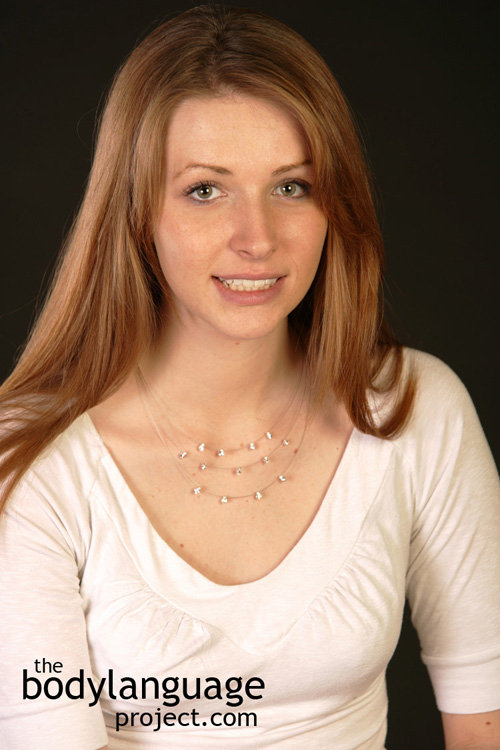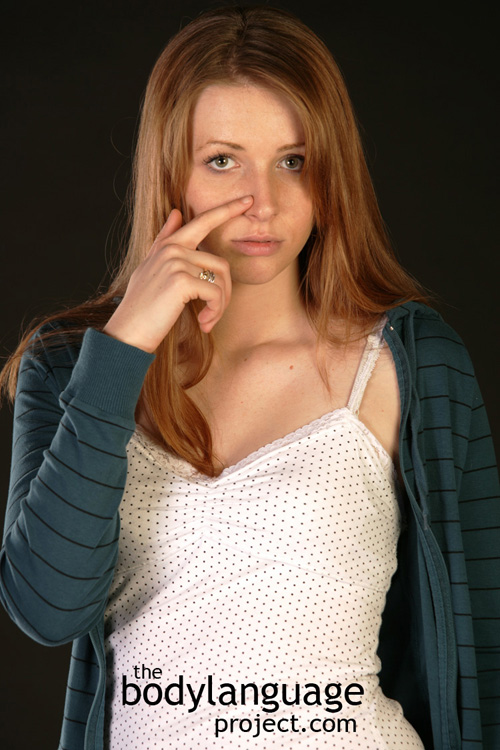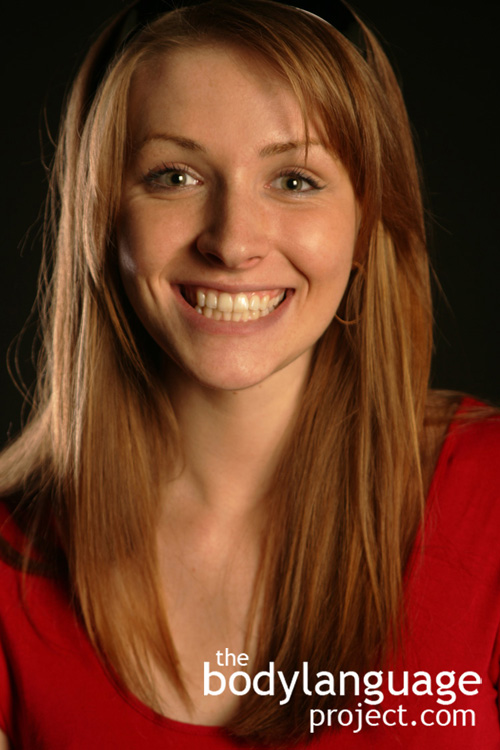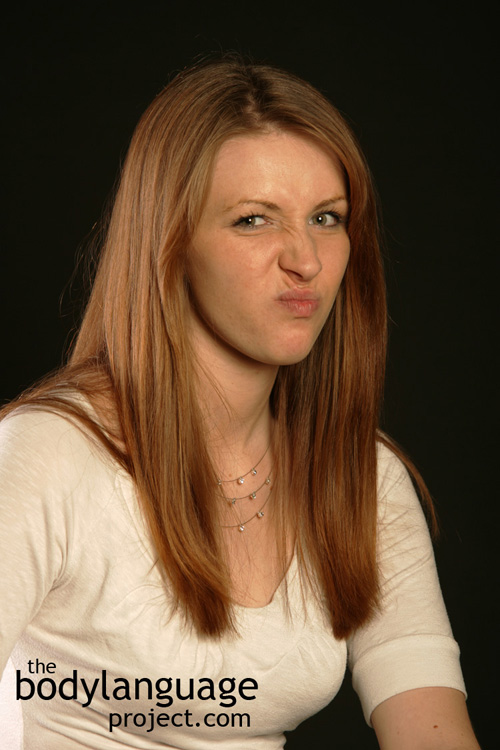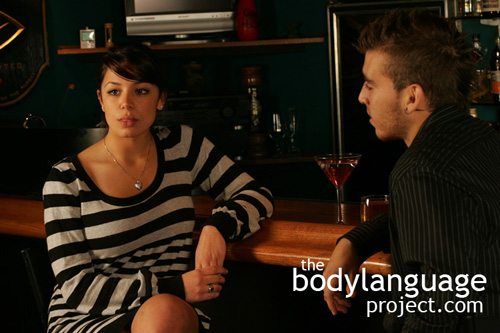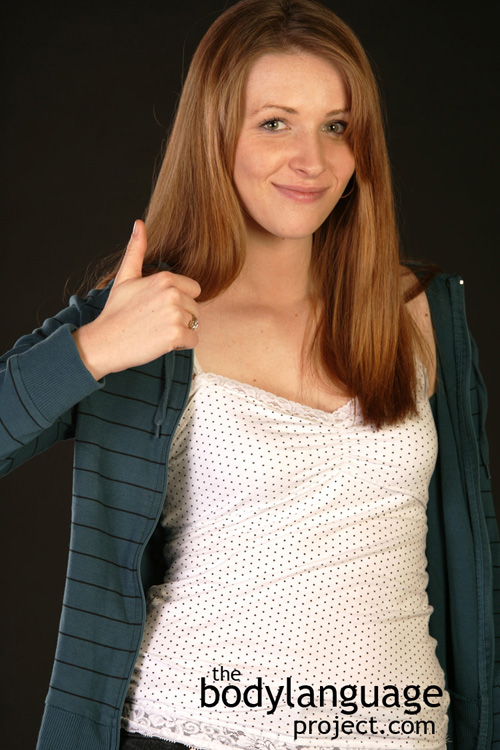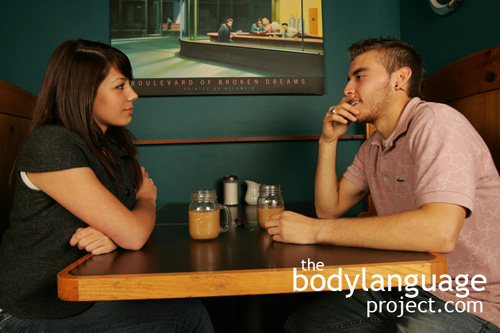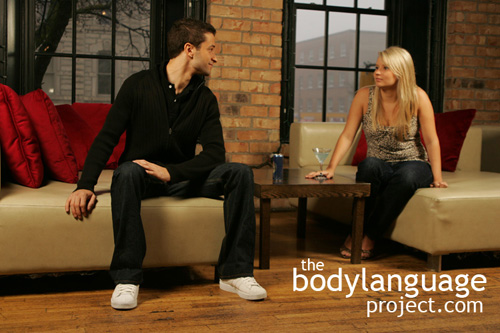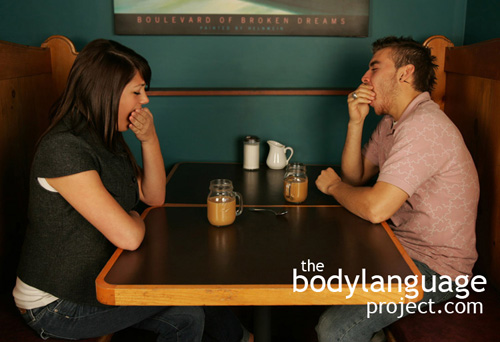Extremely dominant individuals will smile far less then subordinate people because their disposition requires them to do so. They don’t want to appear emotional, because emotions stem from feelings and dominant people have none! Of course this isn’t entirely true, they do show emotions, but the emotions they do disclose via facial expressions are limited and usually meant to show that they are reserved and in control.
Dominant people will use disapproving frowns, snarls or pursed lips. They might squint while in conversation, or avoid eye contact altogether, or even hold prolonged unblinking eye contact. Dominant people can also hold a blink for longer periods of time as if to temporarily shut the world out. To disarm this “extended blinker” try moving one step to the side while they are in mid blink. It is sure to freak them out!
To summarize, being social isn’t a huge priority to a dominant person, they are more concerned with maintain control of others around them instead of trying to make friends or maintain strong emotional bonds. Dominant people figure that whatever socialization is will find them so they won’t go looking for it. Obviously, in business and in life certain characteristics held by dominant people are important, but extremities in any facet is nearly always counterproductive. Showing confidence by holding eye contact is important, but maintaining too much eye contact such as what an extremely dominant person might do, such that it sends shivers down the spine, sends the reverse message. It can negate the existence of others as people, turning them into objects, and seem to cut through them.
Ways of responding to dominance is by using more open body language to disarm them. Cutting through their rigidity with jokes and light hearted humour is another great way to put them into a good mood and break their serious attitude. When trying to break dominant people it is important to avoid submitting from the start, instead try to build an equal footing to foster their respect. You can try to out-stare them by looking at the bridge of their nose instead of their eyes, which can really unsettle them. However, fighting fire with fire in this manner is risky, at best, and requires one to put on a possibly uncomfortable show. The safest alternative is to just ignore their negativity and play yourself up as even more friendly trying to find common interests to help build rapport.
Breaking down touch barriers can also help, but again, this is risky. Touching breaks shields down and the most dominant of people will be taken aback unless the touching is warranted and tactfully executed. When you touch a dog, be prepared for the bark!

